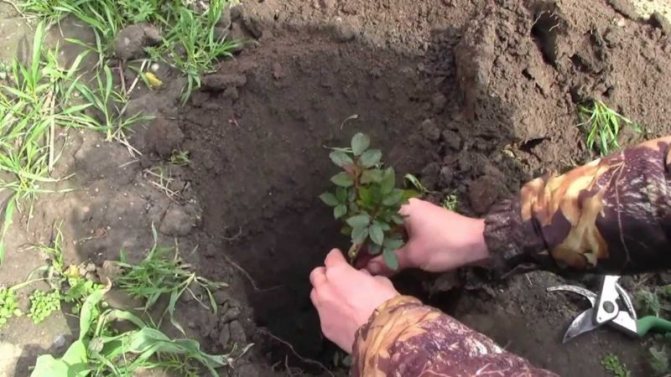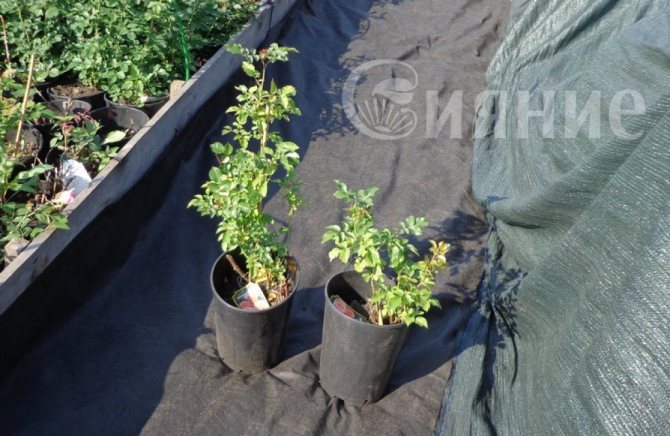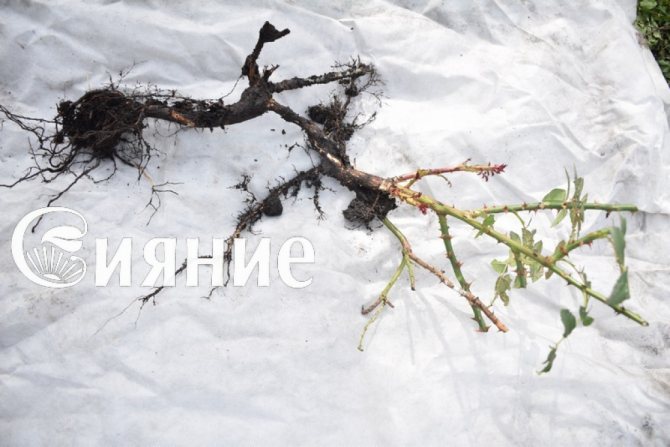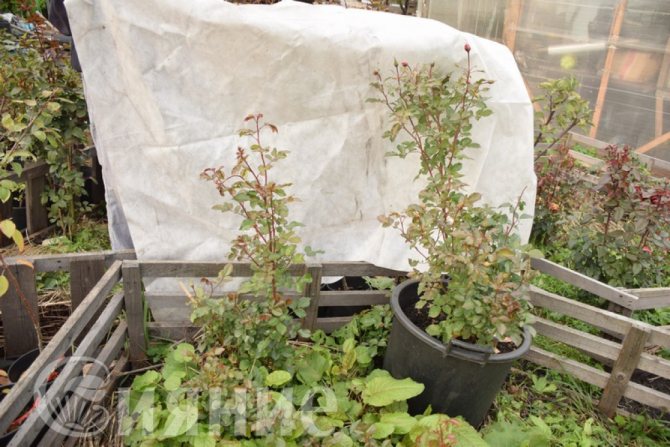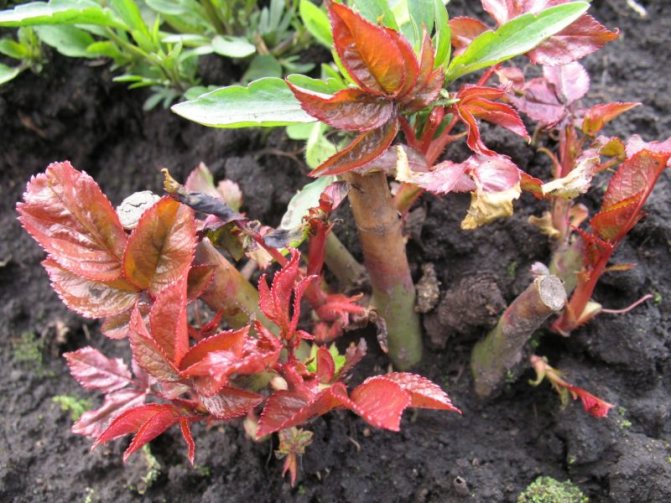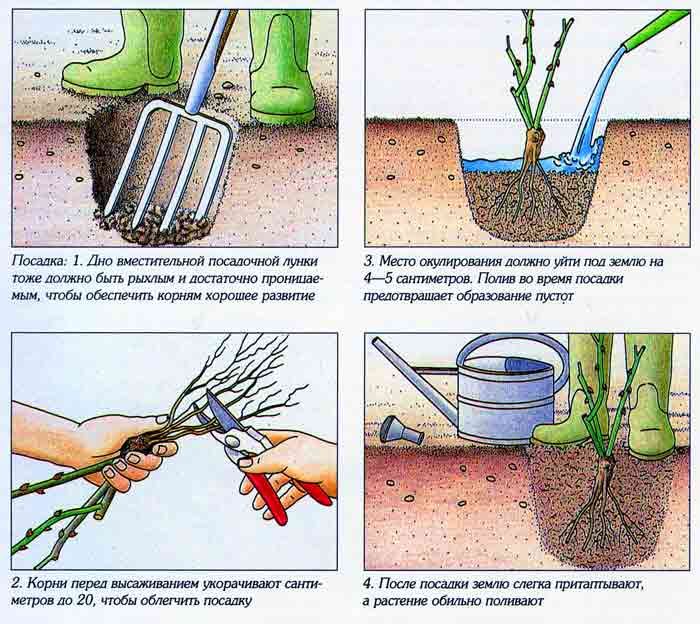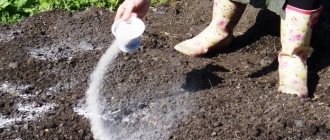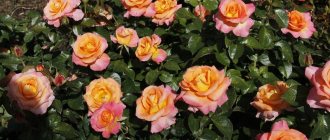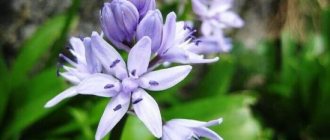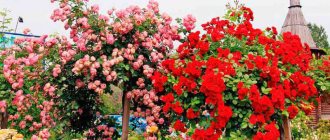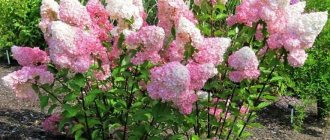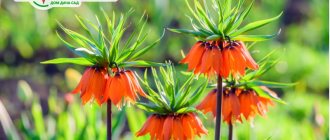The queen of gardens and parks, the rose, has long and deservedly been loved by flower growers around the world. This flower also adorns Russian landscapes. Its climbing types are ideal for vertical gardening. Is it possible to grow beautiful and healthy roses in Siberia? Planting and grooming properly, as well as disease-control recommendations, will help you cope with this task.
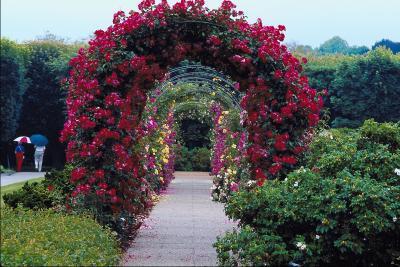
The choice of the variety must be deliberate.
Before you start breeding roses, you should get acquainted with the varieties. Take your time with the purchase. After all, you can purchase seedlings through the Internet, and this greatly expands the range and makes it possible to make a good choice. Explore the varieties, chat with rose growers on the forums, read the relevant blogs. With live communication with flower growers, you can learn a lot of valuable information. After all, beginners do not even always know what requirements the plants must meet.
Often, only a flower is visible in photographs in store catalogs. Its smell, the shape of the bush, capriciousness in care or unpretentiousness are all very important. How long does the flowering last, how friendly is it, do the flowers fade, how they look after flowering? This information is not always available from the seller.
If a single flower is shown in the photo, but the entire bush is not shown, this may mean that the plant does not differ in abundant flowering or the bush is not able to boast of a decorative form.
Amateur gardeners who are just starting to master this plant always have many questions at first, for example: "Is it possible to grow roses in Siberia in the open field?" Certainly possible. And this is not at all as difficult as it might seem at first glance. The territory is huge, but severe frosts happen everywhere.


About the timing of planting
Roses are planted in the Urals in spring and autumn. Spring planting is carried out when the air temperature reaches + 9 degrees. Most gardeners plant roses around the twentieth of April. It is impossible to give an exact date, so you should be guided by the weather.
Autumn planting is also a good option! In this case, roses are planted when the air temperature drops to + 5 degrees. Don't plant roses too early! They will begin to grow actively and cannot bear the cold.
Read also: Vegetative propagation of plants is propagation using
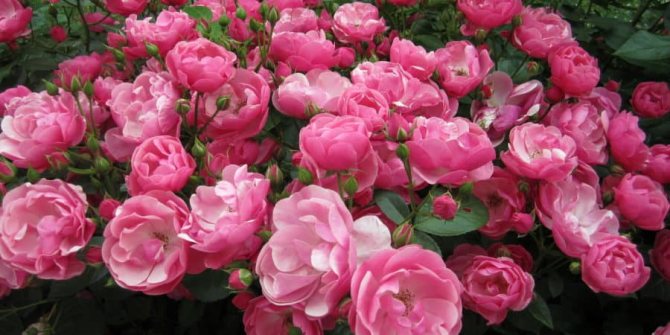

"Ural" roses are unpretentious in care, but you need to choose the right place for planting them. I advise you to place flowers on a hill: excess water will drain, the roots of flowers will be protected from decay. I note that roses planted in a high bed are less susceptible to fungal diseases resulting from waterlogging of the soil.
If possible, place flowers on the south side. The site should not be too open, otherwise the rose will actively increase its green mass to the detriment of flowering. There should be several plants near the flower queen. The rose does not like drafts, consider this feature when planting.
Difficulties in growing roses in a harsh climate
Beginners can be advised to pay attention to cold-resistant varieties. But growing roses in Siberia in a greenhouse is possible even in the most northern regions.
In order for the undertaking to be crowned with success, and the noble plant endowed with lush flowering, you need to know and follow some rules.If you master them, and they are not at all difficult, then planting roses in Siberia will not disappoint, and perhaps even become a favorite hobby. The timing of the beginning and end of garden work is related to the ambient temperature and the degree of warming up of the earth. Since the climate has been unstable in recent years, this adds new questions for the care of the delicate flower.
For the most part, they all agree in determining the timing of planting, in taking care of a safe wintering, in the right fertilizer, which ensures long and abundant flowering, and in the fight against diseases. As for varieties such as Rambler or Claymer, which are quite common, unpretentious and well-mastered climbing roses by gardeners, planting and caring for these species in Siberia is not difficult. However, their cultivation is accompanied by other pleasant concerns, such as decorating them in the landscape.
When roses are cut in Siberia
Pruning roses to Siberian gardeners are done in different ways, some believe that pruning is necessary twice a year: in spring and autumn, others are inclined towards spring pruning, explaining that in autumn pruning exposes the plant not only to stress, but also contributes to the infection of the rose through the cut ...
Spring pruning of a rose grown in the Siberian region is carried out after the ground has completely thawed (in May): dry, broken, loosened and growing shoots inside the bush are removed. After that, the plant is spud to protect it from severe spring frosts. In order to avoid thickening the bush, you need to pay attention to the location of the upper bud, it should be directed outward, it will be enough to leave up to 5 shoots on an adult plant.
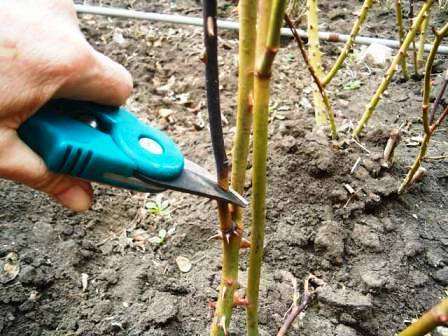

Where to plant
They are light-requiring. Planting roses in Siberia in the fall should be carried out with this feature in mind. By the way, it has been noticed that if the shrubs are provided with proper care - watering, feeding, etc., then they feel great and bloom even in partial shade.
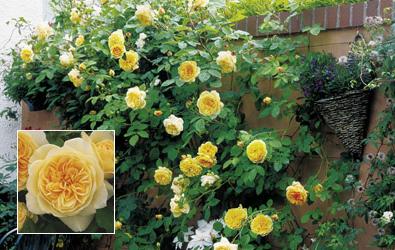

If you want to decorate the wall of your house with plants, then roses are not the best choice. There is a high risk of unwanted temperature changes near the house. On the one hand - the cold air of the street, on the other - the warm wall of the house. Snow melting or drifts, icing during thaw periods are likely. Such contrasts are detrimental to delicate plants. Even good illumination of the southern wall may not save the situation. It is generally not worth planting roses near the walls. For them, a well-lit place with partial shade in the center or on the outskirts of the site will be more comfortable. If you really want to decorate the house, then plant the bushes at a distance of at least a meter from the southern wall.
How to prepare roses for the Siberian winter
Strong plants tolerate Siberian frosts better, therefore, proper care of roses is of great importance: do not fill or overdry the soil, timely feed the rose garden with nitrogenous and organic fertilizers from the moment of opening until the end of watering!
Cover roses as close as possible to the onset of frost to prevent debate processes with a stable snowy winter. As an additional protection from low temperatures, we put more snow on the covered roses. As an artificial covering material, various types of greenhouses made of polyethylene film are used, in any case, the bushes must first be covered with spruce branches or cardboard and roofing felt. Based on the experience of Siberian gardeners, it is not recommended to use sawdust and small shavings for shelter, since when the temperature changes, this material can resist, thereby destroying the entire bush.
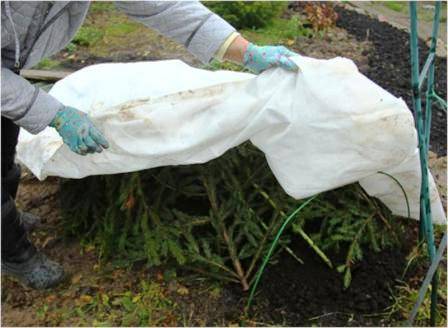

Soil preparation
Dig a hole about 40x40x40 cm, put complex fertilizer on the bottom. Roses are very sensitive to soil quality. If it is clayey, fluff it up by adding sand, wood ash, humus, some peat and leafy soil. If the soil is mostly sandy, then manure, humus and leafy soil.These components will make it nutritious enough and moderately weight.
Planting roses in Siberia is not a tricky business, and if you have a plant that is not grown on a rootstock, but is rooted, then you can not be afraid that in the spring, instead of a cultivated variety, you will have a well-wintered wild rose hip on the site. Try to choose exactly own-rooted varieties, and in any case deepen the root collar by at least 5 cm.It is also not recommended to deepen the root more deeply, since the rose will release new roots from the grafting site, and it will grow much weaker on the roots of the scion.


Half or a third of the prepared soil mixture should be placed on the bottom of the pit, under the roots. Then you should thoroughly moisten the substrate by pouring water into the pit. Powder the roots with ash before planting and place them neatly and evenly in the hole. Pour the remaining soil onto the roots from above, trying to tamp well so that there are no large voids between them. Water again abundantly.
Features of caring for roses in Siberia
The plants are watered once a week, but enough so that the soil is saturated to a depth of about 25 cm. Thus, the growth of surface roots is stopped.
In the spring, formative pruning is performed and damaged areas and stems are removed. For spring feeding, it is advisable to use rotted horse manure, which does not acidify the soil.
In the middle of summer, watering is sharply reduced, fertilization is stopped in order to save the plants from the effects of low temperatures. Preparation for winter begins.
How to preserve seedlings?
Autumn is more suitable for planting and replanting an adult rose. Planting and care in Siberia in spring is the best time for plants obtained from cuttings, as well as for roses sent by mail and overwintered in a cold room at home.
You can start gardening immediately after the snow melts, when the shovel easily enters the ground. This usually happens in April. Old bushes can be replanted in spring, but this is less advisable than in autumn - long-term habituation to a new place can negatively affect flowering, and you will think that the bush has degenerated or the place is not suitable. But cuttings in the spring always succeed perfectly well. Prepare the branches in the fall. Cut long shoots, bring home and disinfect in a weak solution of potassium permanganate. Store them in your basement in a sandbox. If there is no basement, then put it in the refrigerator, in the compartment for fresh vegetables. To prevent the shoots from drying out, wrap them in a damp cloth and then in plastic. In spring they will be fresh and green.
Planting roses in Siberia
In the spring, planting roses begins at the signal of nature itself - knowledgeable gardeners begin it from the dandelion flowering period, and finish no later than mid-June. A later planting may prevent the plant from going through the maturation period of the wood, which is necessary for a successful wintering.
Before planting, it is necessary to inspect the rose seedling, and if it has time to wither, the roots have lost their turgor, it should be soaked in water at room temperature for several hours. Damaged, too thinned, as well as unnecessarily long roots (more than 25 cm) of plants must be cut off, after which it is useful to dip them into a clay talker for healing and better survival. The chatterbox, which is also used to treat damaged bark of fruit trees, is made from clay and mullein solution (2: 1); the addition of microbiological fertilizers or the results of the life of a worm farm gives a good effect.
If the roots of the rose have been cut, the stems of the plant are also recommended to be shortened to maintain a balance between the aboveground and underground parts of the plant.
A planting pit for roses, prepared in the fall, is spilled with water, a mound is formed from the nutrient mixture and the soil, on which the roots of the plant are carefully distributed.The seedling is covered with soil so that the grafting site or the root collar of the rose is located 5-7 cm below ground level. After planting, the plant is spud with earth, mature compost, moss by 10-15 cm, protecting it from drying out. If the weather is sunny, for the first week - two plants are useful to shade, as young shoots develop, shading is removed.
Propagation by cuttings
In April, when the snow melts, remove the thin upper parts of the shoots, cut the branches into 10-15 cm cuttings with buds on each, soak for a day in water with potassium permanganate and you can plant. Use a root root for guaranteed results.
To prevent spring frosts from destroying the plants, plant them in a sunny, wind-protected place with loose fertile soil. Cover each stalk with a plastic bottle: cut off the bottom, and use the upper part with a lid as a mini greenhouse. Keep the ground constantly moist. After a month, you can begin to ventilate the greenhouse bottles by removing the caps for a while. By doing this, you will gradually accustom the plants to the natural atmosphere. Do this very carefully. Root formation requires warmth, constant temperature, high humidity and lack of movement. Having got used to such conditions and being in the fresh air, a pampered plant can cope with a difficult adaptation and die.
It is believed that the appearance of the first leaves indicates that rooting has taken place. Don't be in a hurry to rejoice. You can completely remove the bottles only after a couple of months. In addition, all this year you will have to carefully take care of young plants - shade from the scorching sun, fertilize, prevent the soil from drying out or stagnate water, and protect from freezing.
Are there winter-hardy climbing roses? Planting and caring for many varieties of ramblers and claimings in Siberia does not cause any particular difficulties, since they are characterized as unpretentious and winter-hardy. If you are a beginner, then choose a self-rooted variety grown in a local nursery.
The nuances of growing outdoors
For a long time, Siberian flower growers did not dare to cultivate heat-loving crops in the garden, but with the advent of frost-resistant varieties, they began to try to plant roses in an open area. Many have succeeded.
Landing dates
In order for the flower to begin in the climate of Siberia, which is characterized by a late spring, and frosts begin early, it is necessary to plant a climbing rose when the earth warms up well, dandelions bloom. And this usually occurs not earlier than the end of May.
In the fall, it is recommended to send adult bushes to an open area, which manage to take root before the arrival of winter weather.


Location selection
It is also possible to create comfortable conditions for a rose in a climate where summer is short and the sun does not rise as high above the horizon as in the south. When choosing a place for a plant, you need to take into account some of the nuances:
- A rose should not be planted in a lowland, where the soil deeply freezes in winter.
- It is better to place the culture not in the sun, but in a light partial shade.
- The area for the flower should be protected from cold winds blowing from the north or east.
Buildings are decorated with climbing varieties, but so that the plant does not ice up and die, they plant it at least a meter from the wall. The rose does not tolerate stagnant water, looks harmonious, feels good next to conifers and shrubs, irises and clematis.
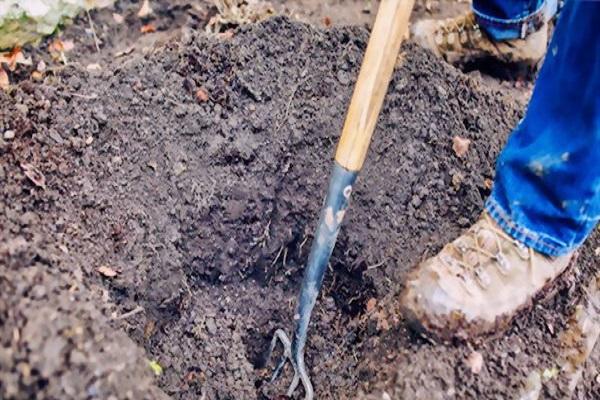

Preparation of planting material
You need to buy a rose at a local nursery, where varieties adapted to natural conditions are sold. It is necessary to choose a seedling for growing with strong roots and shoots, with a green stem. To make the rose take on a new place faster, move away from the resulting stress:
- Potassium permanganate powder is poured into the water, the roots are placed in the prepared solution for a day.
- The flower is soaked in the "Zircon" growth stimulator.
- The shoots of the plant are shortened by 20 cm, damaged branches, dried root areas are removed.
Shortly before planting, the sections are wiped with "Fundazol".Roses, which are sold in a pack with a lump of soil, are placed in the soil along with a container made from a material that dissolves in the ground.


Landing rules
The site for the climbing rose is dug up, leveled, removed from the roots of the weeds. The acidic soil is diluted with ash or dolomite flour, a pit for a seedling is made up to 0.8 m deep:
- A thick layer of fine gravel or expanded clay is poured onto the bottom, river sand is added on top.
- Connect humus, peat and garden soil.
- The well is filled with a nutrient mixture by a third, put 2-3 tablespoons of superphosphate and one potassium salt.
- The rose is placed vertically in a hole, the roots are straightened and buried below the surface by 10 centimeters.
- Supporting the bush with your hand, cover the space.
The seedling is irrigated with warm water. Around the plant, the earth is compacted, a small shaft is erected. For the first 2 weeks, a young rose is covered from the sun's rays.
Rambler
I must say that growing roses in Siberia from cuttings is best done with ramblers. Doroty perkins, bobby james and excelsa have proven themselves most well in harsh climates. Cuttings can be practiced throughout the summer. For cuttings, twigs are collected from the third quarter of the lash - the one closer to the end. Sticks are cut into the size of a pencil. Rooting in the greenhouse takes place within a month.


Rambler are very handy plants for decorating small areas. Their lashes grow up to five meters, they are very flexible and plastic. They are twisted around the support clockwise, trying to keep the branch horizontally. This technique stimulates the regrowth of new flowering shoots of the rose. Planting and caring for the rambler variety in Siberia is suitable for novice gardeners. Its flowers are small, double, collected in lush inflorescences, which are very densely strewn with the entire bush. Flowering, although one-time, but very abundant, lasts almost a whole month. In order for flowers to decorate your garden longer, stop fertilizing with the beginning of flowering and watch the soil moisture under the bush.
Suitable for growing varieties of flowers with a photo
In order to grow beautiful roses on your site, you must follow several rules. And the most important of them is the correct choice of the type and variety of plants. That rose, which will feel good in one climatic zone, will not be able to survive and please the eye in another. Therefore, when choosing, be sure to pay attention to the conditions for which this plant was created. Next, we will consider the types and varieties of roses for different climatic conditions and show their photos.
In the Urals and Siberia
There is a misconception that growing roses in the climate of the Urals and Siberia is impossible or extremely difficult. However, modern varieties of roses are bred and adapted to these harsh conditions. Grafted varieties are suitable for the Urals and Siberia.
It is necessary to start preparing for growing roses in the Urals and in the Siberian regions even in winter. And the first step is choosing a variety. All roses are usually divided into 8 types, but not all are suitable for such a climate. In each of the suitable species, there are several varieties, from which it is worth making your choice.
Tea-hybrid
The popularity of roses among gardeners began with this species. Its representatives are beautiful, fragrant, but very capricious and thermophilic. In addition, they are highly susceptible to various diseases. It would seem that this view is completely unsuitable for the harsh Urals and cold Siberia. But there are several specially bred varieties. A few examples.
Gloria dey
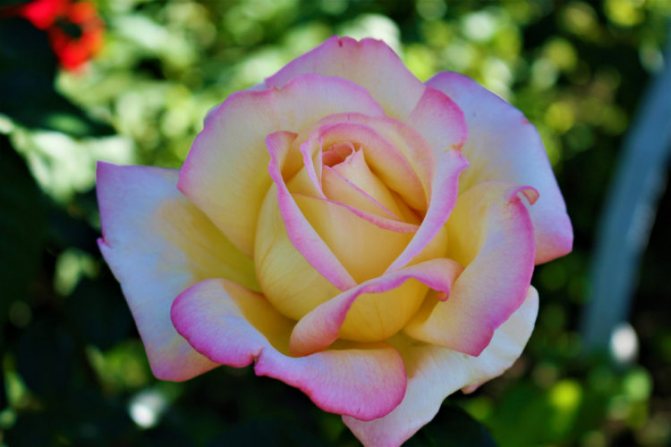

A variety with high winter hardiness. For the winter, it requires a shelter to prevent it from getting rotten during the thaw. The rose of this variety feels great in open, well-ventilated areas. Preferably loose and fertile soil without stagnant water, dryness or waterlogging. it the plant is very light-requiring, it is preferable to plant it in sunny, well-lit areas... This variety is resistant to disease, easy to grow and grows quickly if conditions are met.
Blue Moon
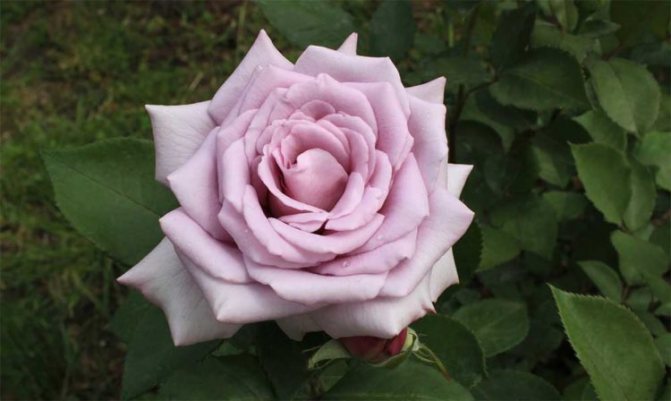

This variety also tolerates winter well, but it is necessary to cover the shrub and plant roots. The variety is distinguished by the almost complete absence of thorns, rather large and fragrant flowers. Very resistant to disease, not particularly sensitive to sun and rain. Prefers moist and well-drained soil.
Double Delight


One of the most popular rose varieties. Differs in beautiful flowers, combining two shades, and an incredible aroma. Can survive winter if properly prepared. The shade of flowers depends on the amount of sunlight - the more sun the plant receives, the more saturated the color is formed. The variety is quite easy to grow. But, in cold climates, the variety is often susceptible to the disease - powdery mildew.
We offer you to watch a video about the Double Delight rose:
Floribunda
Floribunda roses were obtained by breeding hybrids from the tea rose... Most lovers of beautiful rose gardens choose plants of this particular type. Several varieties are below.
Arthur Bell


The variety is winter-hardy, but it is necessary to cover and plant in a place protected from the winds. A very light-loving variety, so you should choose a sunny and well-lit place. The soil loves fertile and well-drained. Does not tolerate cold air stagnation and drafts.
Sunsprite
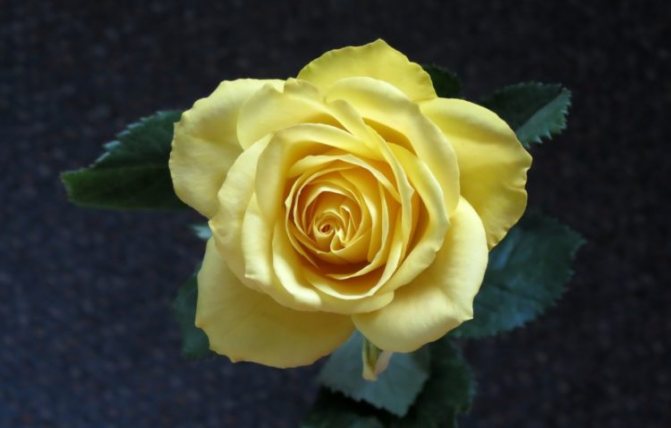

Roses of this variety can also tolerate winter well if properly prepared. High disease resistance. They prefer moist, fertile soil with good drainage. A feature of the variety is a rather long flowering period..
Evelyn Fison
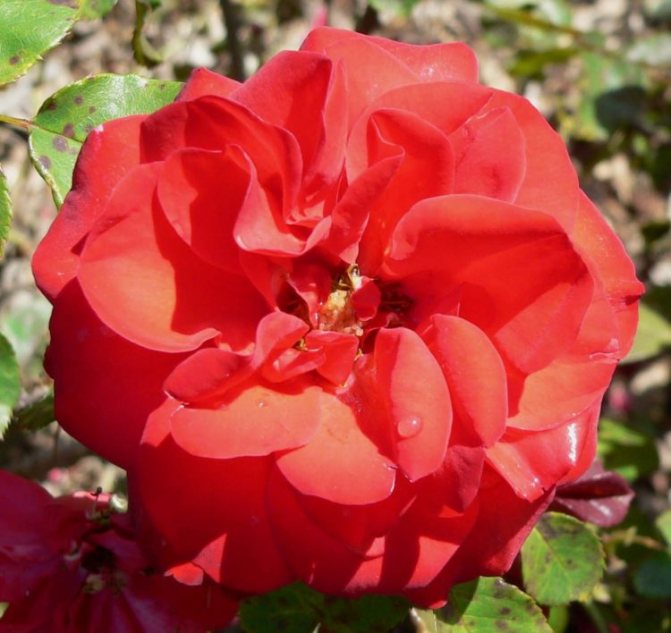

The variety is winter hardy. Resistant to disease, rain and sun.
The soil is also needed fertile, without stagnation of water. Rosa prefers sunny locations, but feels good in moderate shade..
Climbing
They are distinguished by long lashes, strong aroma and rather abundant flowering. This type is often used to create decorative landscape elements. Several varieties are below.
Dorothy Perkins
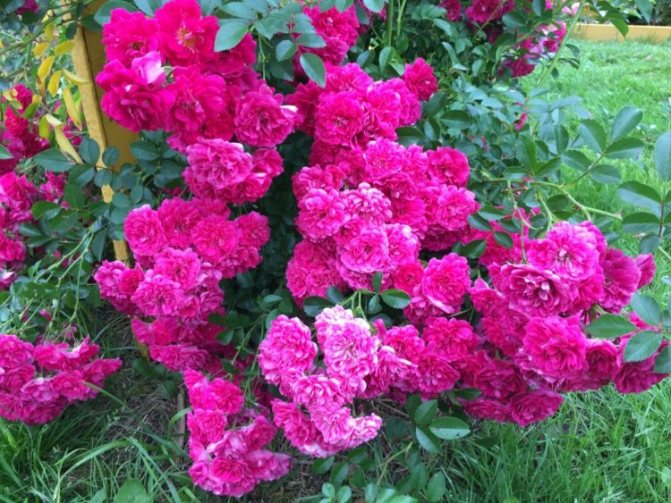

The variety is winter hardy, but requires careful covering of roots and shoots. Differs in very abundant flowering throughout the season. It prefers fertile soil, but it grows well in poor soil. The main disadvantage of this variety is its high susceptibility to diseases, especially powdery mildew, and poor rain tolerance.
New Doon
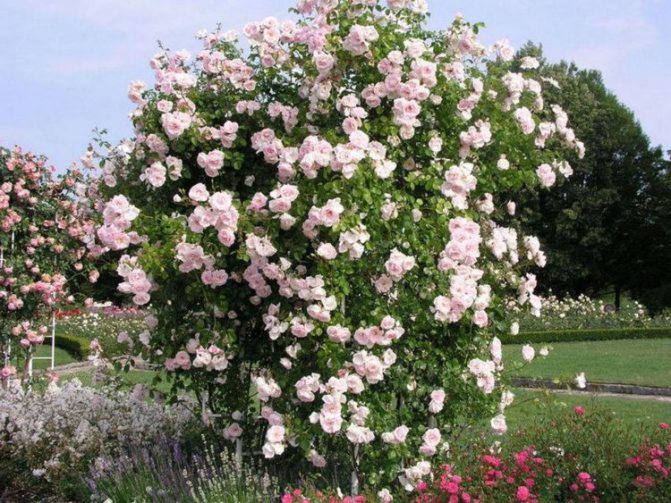

The most popular rose variety in the world. Very winter hardy, with high disease resistance. Prefers well-lit areas, but feels good in moderate shade. The amount of sunlight affects the intensity of the color of the rose.... However, recently, roses of this variety have appeared, which do not bloom again due to improper cultivation. Therefore, if the bush does not bloom again, you will have to start a new one.
We suggest watching a video about the New Doon rose:
Schwanensee
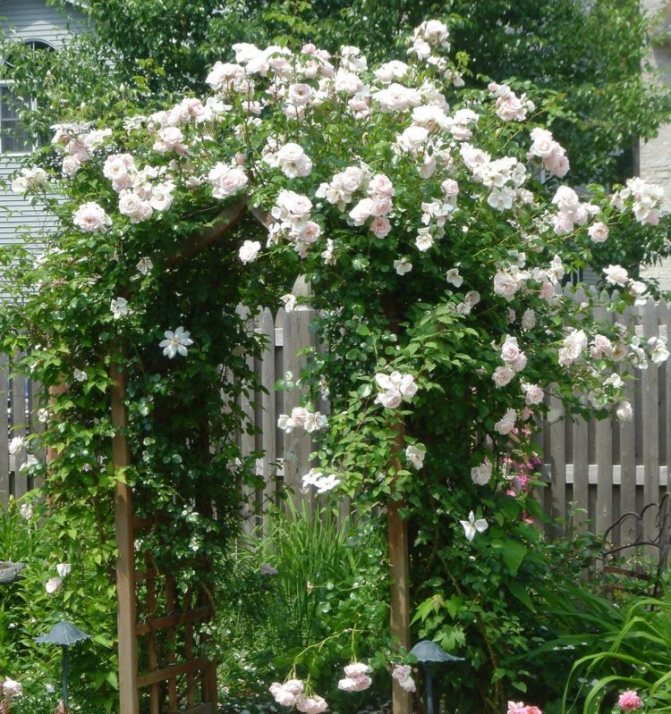

The variety is winter-hardy with proper plant preparation. Rose does not like drafts and cold winds... Sufficiently sun-loving representatives, they feel good in fertile moist soil without stagnation. It is considered one of the most unpretentious varieties.
Canadian
Relatively recently, they began to appear in Russia. However, they have already earned the love of gardeners for their beauty, aroma and unpretentiousness. The varieties suitable for the Urals and Siberia are presented below.
David Thompson
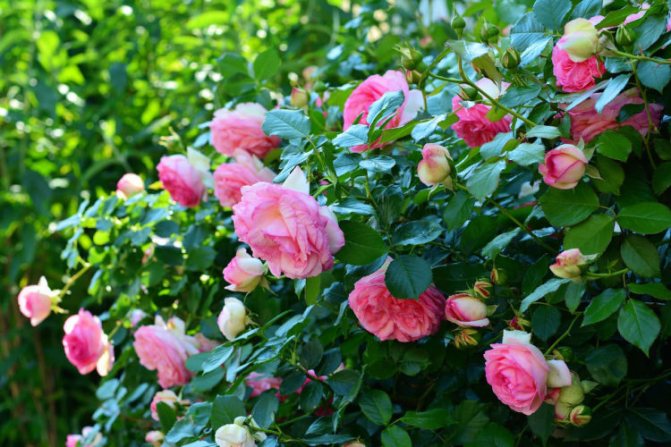

David Thompson is a fairly winter hardy variety, however, freezing is possible in a harsh winter without proper preparation. Differs in very good disease resistance, ease of care, continuous flowering throughout the season.
Moden Blanche


It is considered one of the most beautiful varieties of Canadian breeding. In winter, it can freeze out to ground level, but it grows quickly and pleases with new shoots. In humid conditions, the rose is susceptible to powdery mildew disease, but with the rapid drying of dew and moisture, good ventilation is very resistant to disease.
In central Russia
For growing in central Russia, both the already listed varieties and others suitable for climatic conditions are suitable. Varieties that do not require special preparation for the winter period are also suitable for this zone.
Canadian
Roses of Canadian selection were bred for the climate of central Russia... There are many varieties to choose from.
Henry Hudson
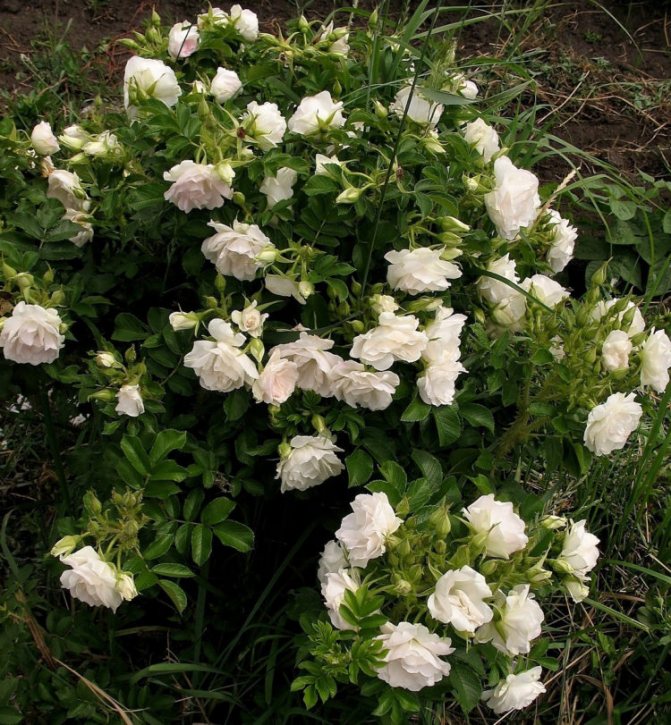

Quite a winter-hardy species, resistant to diseases. Blooms profusely, but not for long.
David Thompson
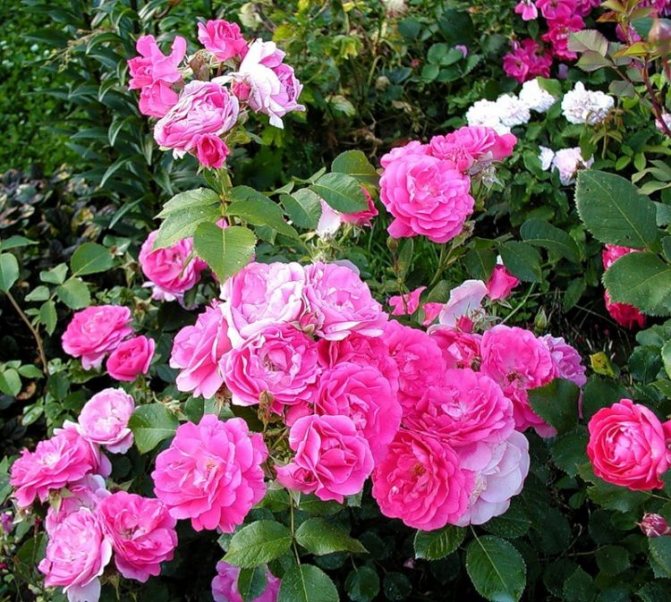

Also suitable for central Russia. Blooms profusely and long enough: up to six months. Unpretentious in cultivation.
Charles Albanel
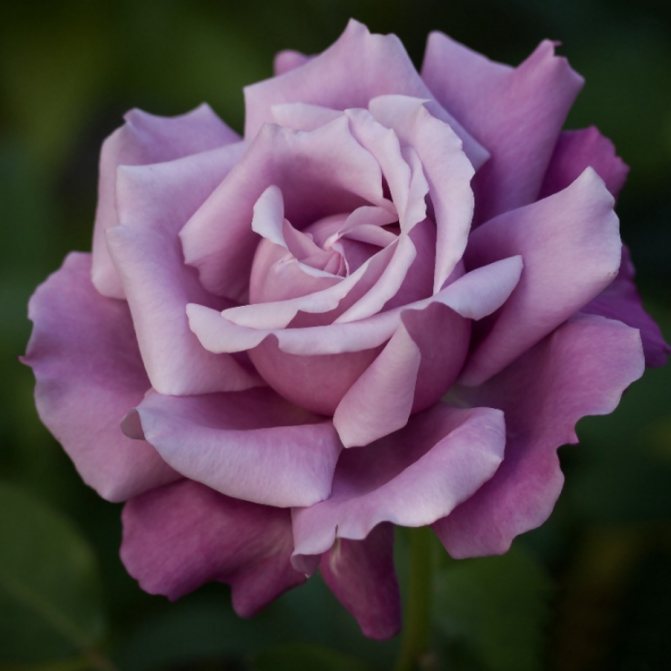

The variety tolerates moderate winters well, bushes of low height... They stop flowering only with the onset of frost. However, he loves good soil and sunlight.
Uncovering
These varieties are very popular in Russia. They do not require special training and shelter in winter, but at the same time they delight with beauty and aroma. Several varieties are below.
Erinnerung an Broth
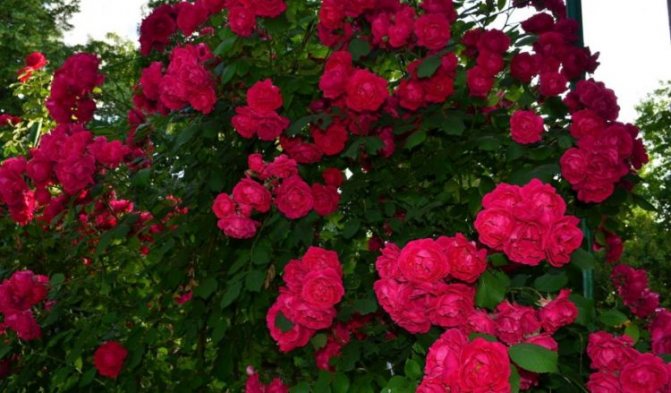

The variety does not need to be covered for the winter, it is able to endure frosts down to -30 ° C. Loves sunlight, disease resistant.
Lyon
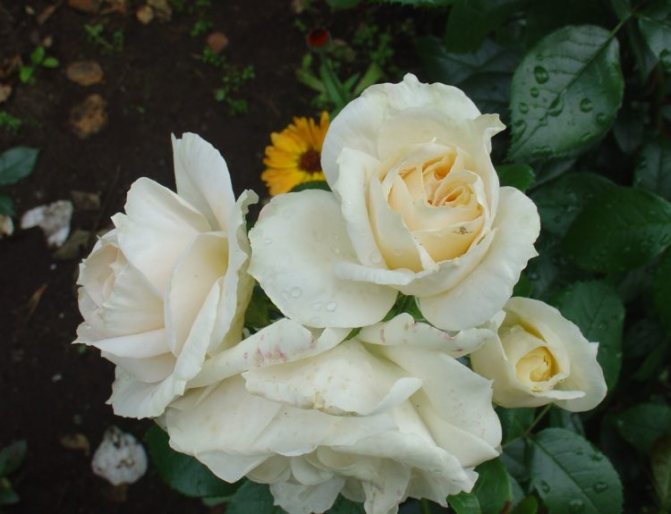

Lyon roses do not need to be covered for the winter, but they begin to bloom only by the middle of summer. Quite unpretentious.
Pastella


It also does not require special shelter in winter. They begin to bloom quite early and profusely. They love sunlight, but feel good in moderate shade. Disease resistant.
Climbing
Almost all climbing varieties feel great in the conditions of central Russia. Varieties are very popular:
- Golden Wings.
- Mermaid.
- Baltimore Belle.
However, climbing roses should be covered for the winter to avoid freezing of the shoots.
Beautiful and fragrant roses can be grown in any region of Russia and in almost any climatic conditions. The most important thing is to choose the right variety and place for this beautiful plant.
Variety with fragrant flowers
Musk roses are highly appreciated by many gardeners. Planting and caring for this variety in Siberia will be successful if you choose a place for them with loose neutral soil, well protected from cold winds and sufficiently illuminated. Traditional musk roses exude a strong amber scent. It does not come from the petals, as is the case with other varieties, but from the stamens, so even withered flowers continue to smell. However, they do not always have such a bright aroma. Many hybrids are more decorative than older varieties, but odorless. Musk roses produce flexible whips up to 2.5 meters long. This allows them to be used to decorate gazebos and arches. The best varieties are Mozart and Ballerina.
Choosing a variety
As an experienced gardener, I recommend buying seedlings from specialized nurseries. Such plants are quite hardened, that is, they are adapted to the harsh winter. Seedling nurseries are very popular today.
If possible, buy Canadian roses. These flowers are characterized by increased winter hardiness. Buying Canadian roses is not an easy task, it is very important not to run into a fake! Give preference to stores and nurseries that you are 100% sure of.
Now let's look at the most popular varieties for the Urals
- Rosarium Uetersen. The peculiarity of this variety is its very long stems (max. Length - 3 m). Rosarium Uetersen can be grown as a standard tree. Roses of this variety show resistance to harsh winter, as well as temperature extremes. Rosarium Uetersen is not afraid of fungal diseases - this is an important advantage. The dark varieties of Rosarium Uetersen are popular. The average bud size is 9 cm.
- "New Dawn". The advantage of the variety is that it is unpretentious to care for. New Dawn is beautiful and cold resistant. During the flowering period, these roses emit a very pleasant, delicate aroma. New Dawn features thorny stems.
- Golden Celebration. The average height of this variety is 1.3 m. From the name Golden Celebration it can be understood that the buds are yellow or golden in color.During the flowering period, the roses emit a pleasant aroma with hints of vanilla and caramel.
Read also: Rose amelia renaissance encyclopedia of roses
Miniature climbing rose
Another charming example of climbing roses is the pirouette variety. Since its branches do not grow more than one and a half meters, it is often planted as a scrub - a single bush. Small flowers of a slightly apricot shade are collected in a brush. They open very amicably and so abundantly that foliage is not visible behind them. Long flowering. The aroma is delicate, pleasant, sweet, albeit weak. "Pirouette", practically does not get sick with powdery mildew and black spot, which are often dominated by roses. Planting and caring for this variety in Siberia is also convenient because it is cold-resistant. A little cover is nevertheless necessary.
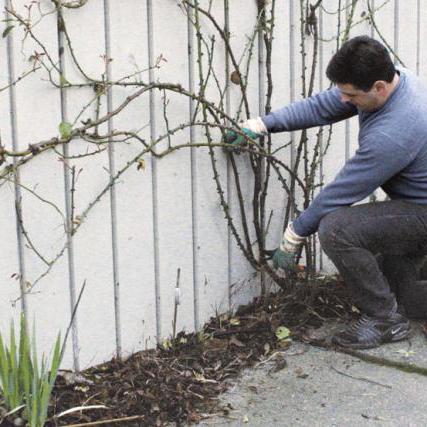

Rose varieties for cold climates
The Siberian climate is known to be characterized by late spring, short summers and severe winters. To withstand such conditions, plants must initially be regionalized in the local climate. Those. by the degree of survival rate, the seedlings grown in Siberian nurseries are in the lead. Gardeners give the second place to Canadian roses, because the climate of this country is similar to the Siberian one. But real Canadian roses, unfortunately, are rare. This category of plants is too attractive to buyers, so it is most often counterfeited. It is better to purchase Canadian varieties only from a reliable supplier, and, of course, not from hands or from the market.
You can also grow a rose from a cutting, read about it: https://enn.imadeself.com/vopros-otvet/razmnozhenie-roz-cherenkami.html
The second selection criterion is vaccination. According to statistics, grafted varieties of roses in Siberia endure winters much easier and do not freeze, because they have higher immunity. The stock for a varietal rose is usually a rosehip, and its immune system is much more resilient than that of its own rose roots.
Here is what, according to Siberian gardeners, the five most unpretentious and winter-hardy varieties of roses look like:
First Place: Rosarium Uetersen
Belongs to the Climber group, i.e. large-flowered climbing roses. It can also be grown as a stem. It blooms in dark pink petals with gradual fading. The size of the flower can be up to 12 cm, but the colder the climate, the smaller the inflorescences will be. The approximate size of flowers for Novosibirsk is 5-6 cm. Rosarium Uetersen is loved for its resistance to fungal infections, repeated flowering (the first is the most abundant, and then - in waves). Powerful stems are not afraid of frost or wind. Gardeners can ruin this rose only if it is improperly laid for the winter, when the stems break from an unsuccessfully chosen direction of laying. The bush reaches up to 3 meters.
Runner-up: Westerland
A German variety adored in Siberia for its continuous flowering. This rose wakes up and blooms very early, and after that it practically does not remain without flowers. The flowers change color from bright orange to apricot-salmon. In diameter - up to 10 cm. It is certified by ADR as one of the most unpretentious roses.
Third place: New Dawn
Descendant of American roses. It blooms with delicate pink, fragrant flowers almost all season. The gardeners of Siberia gave her the nickname "Very", that is. very frost-resistant, very unpretentious (grows everywhere), very prickly, very fragrant, etc. The only caveat: recently there have been copies of New Dawn, which bloom only once. Therefore, before ordering, check the number of blooms, otherwise you can see this beauty only once, at the beginning of summer.
Fourth place: William Sheakespeare 2000
BUT
New generation English rose, grown by world renowned breeder David Austin. It blooms with velvety deep red flowers, gradually turning into a lilac hue. Fragrant, of medium height (up to 110 cm), forms many flowering brushes on each branch. When buying, pay attention to the presence of the number 2000, since there is also an ancestor of this rose - William Sheakespeare, which does not have such a high immunity to fungal infections.
Fifth place: Golden Celebration
Another pet of David Austin. It blooms twice, with bright yellow large, ball-like flowers exuding a lemon-caramel scent. In cold climates it grows up to one and a half meters in height. Practically not susceptible to diseases, except for black spot. Looks great in mixborders.
You can learn more about how to create a mixborder from perennials: https://enn.imadeself.com/ozelenenie/miksborder-iz-mnogoletnikov-poshagovo.html
Climbers
These are, one might say, monumental climbing roses. Planting and caring for this variety in Siberia can be complicated by difficulties with shelter. Compared to ramblers, whose whips reach five meters in length, climbers are just babies. Their shoots do not outgrow the 2-meter mark. However, they are very thick and do not bend as easily as miniature ramblers. It is very difficult to wrap such an escape around a post or arch. If you run the branch vertically upwards, then it will bloom only at the upper end. Flowers are very abundant when the branch is horizontal. In a flower garden, they are placed in a fan on fences, trellises. This stimulates the regrowth of new flowering shoots. If you want the roses to bloom for as long as possible, then stop feeding when the buds are tying, and water daily in dry weather. And climbers bloom luxuriously! Large fragrant flowers adorn the bush for almost a month, and for remontants, twice a season. The best varieties are Elf, Rosanna, Pink Cloud and Pierre de Ronsard.
the best varieties for the Urals and Siberia


Magnificence, elegance, sophistication, an abundance of diverse pure and rich color shades and subtle, sometimes subtle aromas of large (up to 10 cm in diameter and more), amazingly beautiful flowers - all these are floribundas. They are majestic and irresistible, adequately overcome the vagaries of the weather, bloom very abundantly and for a long time, unpretentious, hardy to diseases and winter-hardy, for the winter, a traditional light shelter is enough.
| ARTICLE IN THE TOPIC: Climbing roses varieties for the Urals and Siberia |


Roses of this species, depending on the variety, can grow in height from 30 to 100 cm. At the top of each shoot, a whole bouquet of brightly colored flowers is formed. They can be double or simple, goblet or cupped. Flowers ranging in diameter from 4 to 10 cm bloom in mid-summer. Their advantage is that they bloom not in one wave, but throughout the summer, forming more and more flowers that adorn the garden until autumn.
Depending on your preference, floribunda roses can be grown as a shrub, stem or pot plant. They can decorate a garden plot, a loggia, a gazebo or an apartment. They stand well in cut and are often used for arranging bouquets.
Flowers of this variety of roses are from white to cream color, medium size, densely double (up to 50 petals), with a high center, in inflorescences. Pointed bud. Possesses a pronounced aroma. Medium bush with straight shoots. The rose blooms profusely. The variety is suitable for winter forcing. [/ Td]
Jack Frost | |
Arthur Bell | |
| This hardy, cheerful floribunda has a rich fruity aroma. The disadvantage is the fading of the flowers: at first they are a wonderful bright yellow color, but quickly become lemon and cream. The flowers are semi-double, with crimson stamens. Appears in medium sized clusters and bush with thick, tough, thorny shoots. The flowers are rain resistant. Forms a tall bush with dense leathery foliage, flowers are large, resistant to bad weather. Resistance to black spot and powdery mildew is good. Flowering begins in early summer and lasts until autumn. | |
Deja Vu | |
| Tight, conical, with a slightly elongated shape, the bud of this rose variety has about 30 wavy petals. The color is pinkish-orange with yellow overflow and red edging. The flower is double, it grows up to 9-12 cm in diameter. The branchy bush has straight shoots and is medium-sized.The height is about a meter, and the width is within 60 cm. The buds appear in 2-6 pieces on the shoot. The stems are covered with medium-sized foliage. The aroma is light, pleasant. The variety is well suited for landscaping household plots. Winter hardiness is high, but it is advisable to cover the bush for the winter. Disease resistance is above average, but additional treatments will only be a big plus. Rosa Deja Vu is very fond of sunlight. | |
Freesia (Friesia) | |
| This rose variety is one of the most unpretentious. The bright yellow petals of this rose have a uniform color of the purest yellow color and remain bright throughout the entire flowering period, from June to September, practically without fading. The buds appear singly or in clusters with 4-7 flowers each. The foliage is shiny, has a rich dark green color. The rose has a sturdy stem that withstands strong winds well and does not bend even in heavy showers. | |
Evelyn Fison | |
| The bush of this rose is branched, rather sprawling and prickly, it grows up to 80 cm in height. Its leaves are leathery, greenish-shiny. Cup-shaped buds with many double petals of bright red color and burgundy around the edges are simply mesmerizing. Flowers do not fade in the sun and are not injured by heavy rains. Rose Evelyn Fison grows well both in a lit area and in partial shade. The most suitable soil for it is with neutral acidity. Plant these attractive roses on your site - and with the necessary care, they will delight you with a stormy and fragrant flowering every summer, despite the harsh Ural climate. | |
Laminueht | |
| A variety with flowers of stunning beauty: the petals at the base are painted in a delicate cream color, which gradually turns into raspberry-pink tones towards the edges. The buds have a rich crimson color. The flowers bloom slowly, as if giving an opportunity to admire their perfection. Flower size 7-8 cm. Repeated flowering variety. The plant is short, about 80 cm, but bushy, with dark green glossy foliage. Weak resistance to rain and fungal diseases. This rose was bred as a cut rose, so the flowers stand in bouquets for a long time. The variety is suitable for creating a hedge. |
All golden (Golden Years)


Snow Maiden (Snegurochka)


Jubilee of the Prince of Monaco (Jubile du Prince de Monaco)


My Munich (Mein München)
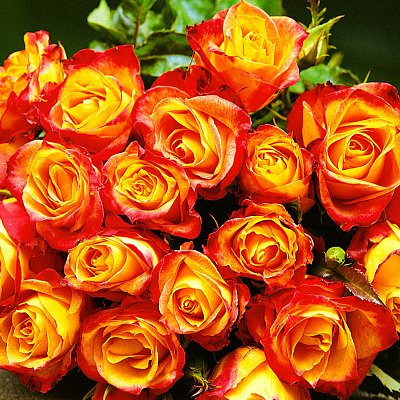

Rhapsody in Blue
Aspirin Rose
Sangerhauser Jubilaumsrose
Rotilia
We have described the most popular floribunda rose varieties among gardeners of the Urals and Siberia. But there are many more beautiful varieties to which we also advise you to draw your attention.
Floribunda lilac roses
|
Floribunda white roses
|
Floribunda yellow roses
|
Pink floribunda roses
|
Floribunda orange roses
|
Floribunda red roses
|
Mixed color floribunda roses
| |
Canadian roses varieties for the Urals and Siberia | ||
Climbing roses varieties for the Urals and Siberia | ||
Scrub roses varieties for the Urals and Siberia | ||
Ground cover roses varieties for the Urals and Siberia | ||
Tea-hybrid roses varieties for the Urals and Siberia |
Shelter for the winter
How to keep roses in Siberia in winter? Planting and caring, watering and weeding, feeding and pest control - everything that you did in the spring, summer and autumn may be in vain, and next year you will have to start all over again, including the search for a good reliable bush if your bush is broken frost.


Roses are covered after the first frost, on a dry day. This is important because sheltering wet bushes will create an unfavorable microclimate and the development of fungal infections. Shoots are removed from the supports and laid out neatly on the ground. If you bend the thick branches of the climber, then use the forks to dig in the ground. This will make it easier to fold the bush. There is no need to spread it very low on the ground. Let it rise a little. Your goal is to dress the plants in a fur coat. Nonwovens such as lutrasil have proven themselves very well in severe winters. Take the thickest one and fold it in several layers. The bushes should be covered with a continuous blanket, and not in separate fragments. Press along the perimeter with bricks.
How to water and fertilize roses grown in the Siberian region
In the summer, grown roses are watered 1-2 times a week., the earth should be well saturated with moisture (10-20 liters of water are poured out), frequent and fractional watering contributes to the appearance of surface roots, they are sensitive to frost. When watering, water should not fall on the leaves, so as not to provoke their burns and not to expose the plant to fungal diseases. They stop watering roses in mid-August, but remember that in October, before "wintering", the soil must be sufficiently moistened.
The first fertilizer for the rose is applied as soon as the snow melts.... To fertilize roses grown in Siberia, nitrogen fertilizers are used (ammonium nitrate, urea), nitrogen fertilization is stopped from mid-July to prepare the plant for winter. During the growing season, roses are fed with micronutrient fertilizers, calcium nitrate solution 1 time in 10-15 days. In rainy and cool weather, plants are sprayed.
In the first year, the root system of rose seedlings is actively developing and they do not need feeding.
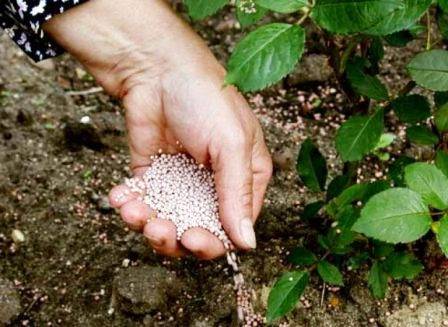

Opening
How does the cultivation of roses in Siberia begin? Spring is the time when new bushes are bought and old bushes are opened. Shelter should be removed in several stages. First they ventilate, then they open it slightly, increasing the time, and, finally, they completely remove it. This is done in order to accustom the flowers to new conditions. Having removed the covering material, they look through the lashes and cut off the damaged or dead ones to healthy tissue. At this time, it is very convenient to loosen the ground around the rose and pick out the roots of the weed.
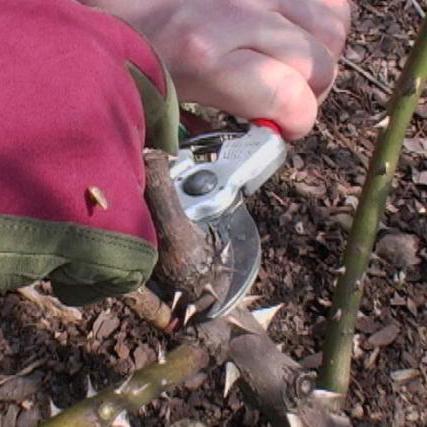

Siberian ways to hide such roses
So that the cultivation of roses in Siberia does not end with the freezing of the bushes in the very first winter, gardeners have come up with many different options for shelter. Their similarity is that for roses in cold climates it is necessary to create a dry shelter, i.e. protect each seedling on top with a waterproof material. It will protect the plant from moisture, which instantly turns into ice.
You can learn more about how to cover roses for the winter from the material: https://enn.imadeself.com/rastenija/kak-ukryt-rozy-na-zimu.html
Shelter options:
- "Snow blanket"
... If your area has stable snowy winters, then throwing snow on each bush is the best option for shelter. Indeed, in Siberia, snow both falls and lies until spring, so that under it there is always a stable temperature. - "Frame made of plastic arches".
A frame is made of two intersecting arcs, placed over a rose, the bush is covered with half-dry earth or leaves, covered with a double layer of spunbond or lutrasil on top, on top of which the film must be spread so that it captures part of the soil. Sprinkle the edges of the film with earth. Before the onset of stable frost, the film should be slightly opened so that the stems do not come out. - "House made of polycarbonate".
Instead of plastic arches, two pieces of polycarbonate are placed over the rose, fastened at the top with twine. It turns out a house. Cover with lutrasil and film from above. But at the ends, the film is closed only after the onset of frost. - "From plastic buckets."
Each bush is spud up to a height of 20 cm, covered with spruce legs and covered with plastic containers without holes on top.
This is how it all looks like:
With any type of shelter in early spring, many Siberians repeatedly shed soil with epin in order to revive their pets. Grateful roses give their owners abundant and fragrant flowering, although nature has given them very little time for this.
Fertilizers
Do roses require any special dressing in Siberia? Planting and care in this region is somewhat more time consuming than in Europe, but this is only due to protection from freezing in winter. The rest is the same. Plants require large amounts of nitrogen, potassium and phosphorus in spring. Roses are very dependent on the microbiological composition of the soil and are sensitive to the lack of one or another element. As for the acidity, the slightly acidic (pH 5.6) will be just right for them. From mid-July, nitrogen fertilizing, which enhances the growth of shoots, should be stopped. Otherwise, by winter, there will be many young immature shoots on the bushes that will not withstand the difficult winter - the affected tissues of young shoots will become a breeding ground for infections, which can provoke the death of the entire plant.
If there is an opportunity to feed the rose with manure, then do it in the spring, and it will repay you with excellent growth and flowering. Rotten manure and mullein are the best fertilizers for roses. Manure is a supplier of nitrogen, and the necessary potassium and phosphorus are found in wood ash. In addition, plants need calcium, magnesium, iron, boron, manganese and copper for proper growth and development. Therefore, do not neglect complex mineral fertilizers.
In September, it is recommended to add superphosphate or potassium nitrate for the last time under the bushes.
The subtleties of plant care
In order for the seedling to begin to develop rapidly, to sprout and to grow stronger for the winter, it must be carefully looked after.
See also
How to properly plant and grow rose bushes in the fall in the open fieldRead
Watering
The rose is irrigated with settled water twice a week, in the heat it is done more often. Before the onset of cold weather, it is enough to moisten the ground under the seedling every 7 days.
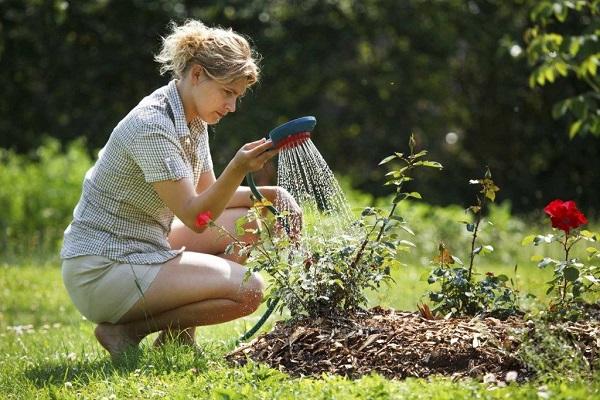

Fertilization
To feed a young plant, mullein is most often used, which contains a lot of nitrogen. One part of the organic product is mixed with 10 hours of water, infused and fertilized with a rose 20 days after planting. For the second feeding of the plant, you can make bird droppings, which takes in a concentration 2 times less than manure.
Trimming and shaping
Before the onset of frost, they get rid of weak and damaged shoots, cut off the buds and leaves. If this is not done, the rose will not survive the winter. In the spring or in the autumn, formative pruning is started. If flowers are laid on new shoots of a plant, the old ones are shortened. When the buds are formed on last year's lashes, only the top is removed from them.
Preparing for the winter period
Even roses, which are bred for Siberia, need shelter during the cold season. To do this, the branches of the plant are removed from the trellis and covered with needles from above, wrapped in a material that does not allow moisture to pass through. Some gardeners build a frame for the winter and wrap it with burlap, tarpaulin or roofing felt.Dry leaves or spruce branches are laid in the space, covered with polyethylene.
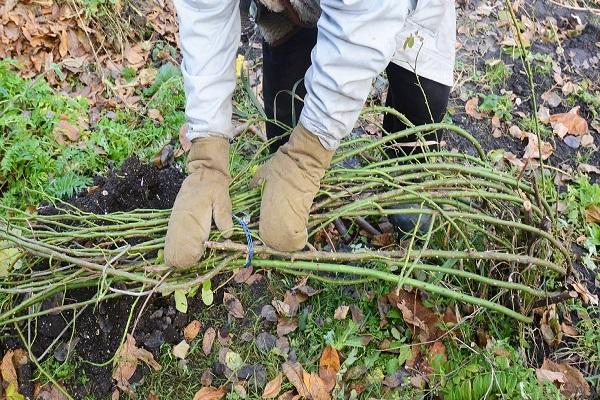

Black spot
This misfortune is not as terrible as it seems, although it greatly spoils the appearance of the bushes. It occurs most often in the second half of summer. The leaves become covered with black spots, then turn yellow and fall off. It starts from the bottom of the bush and gradually rises up. In severe cases, it leads to the complete fall of all foliage. At the onset of the disease, it is enough to cut off the affected leaves and burn, and spray the bush with a weak solution of mullein (20 parts of water for one part of mullein). Two or three procedures are enough. If you can't find a mullein, buy drugs containing penconazole, triazole, or mancozeb from the store. It can be Topaz, Profit, Skor or Ridomil Gold.
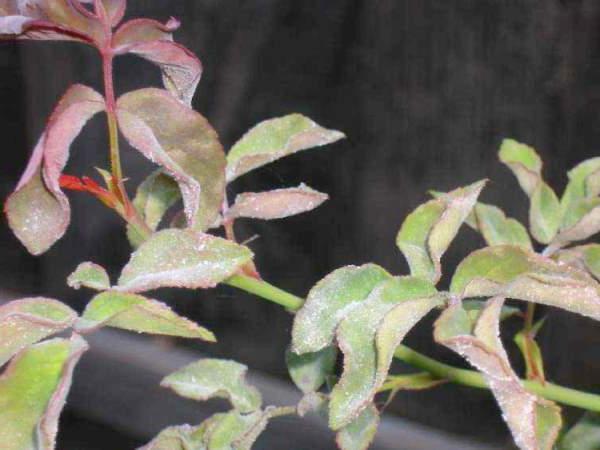

Description of roses for growing in the Moscow region
When choosing plants for growing in the Moscow region, you need to take into account the following parameters that a plant should have:
- Since all four seasons of the year are characteristic of the Moscow region, with the appropriate temperature for each of them, the plant must be hardy to changing climatic conditions;
- Possessing disease resistance. High humidity in the region under consideration, rare sunny days increase the development of various ailments;
- Since more than 6 months in this region the daylight hours are much shorter than it should be, varieties should be chosen that do not require prolonged sunlight.
Ideal for the climate of the Moscow region and will decorate any garden with a rose Charles Austin. It is highly resistant to adverse weather conditions.
Powdery mildew
The disease often affects roses growing in a greenhouse. In climbing roses, it occurs as a result of damping as a result of too much watering in cool weather. It affects the young parts. They are covered with a white powdery coating. Spraying the bushes with wood ash infusion is very effective in this case. First, you need to remove the affected leaves, buds and shoots, cutting them to healthy tissue. All this must be burned so that the pathogenic microflora does not resume activity. The cleaned bushes should be sprayed with an ash solution, and after two hours, rinse it off with clean water. In case of severe damage, drugs containing triazole are used - "Skor" and "Topaz".
Typical mistakes of flower growers when growing roses in the Urals
- There is an opinion that roses planted in summer, in July-August, tolerate wintering better, since they manage to get stronger before the onset of frost. This is absolutely not true. About a month after planting, having exhausted the reserves of nutrients from its own root system, the seedling is actively moving into growth. Additional strength is required for the formation of growth. In the short Ural summer, there is not enough time for young growth to ripen. As a result, the plant leaves in the winter weakened, unripe stems vytryut, rot, become the cause of the death of the entire plant. The optimal time for an autumn transplant is the second half of September, for a spring one - the end of April.
- Novice gardeners often set up a flower garden according to the recommendations of landscape designers, taken from foreign magazines. For the Ural region, this approach is not acceptable. It is necessary to plan the location of the rose garden according to the rules that take into account local climatic features (
Suitable varieties for the Siberian climate
Not all varieties of roses are frost-resistant and are suitable for Siberia. For a start, it is better to choose those seedlings that have already been grown in Siberian conditions. The climate of this region is characterized by late spring, fleeting summers and long and cold winters. Therefore, grafting plays an important role in the selection of seedlings. Experts note that grafted varieties are much easier to tolerate cold and have stable immunity. Basically, roses are grafted onto rose hips. First, it can easily endure any temperature. And secondly, the shrub quickly takes root in the ground.
The main varieties of roses suitable for the Siberian climate:
- 1Rosarium Uetersen. This variety is distinguished by its reusable flowering and resistance to fungal infections. The rose easily tolerates cold and strong winds. The bush can grow up to 3 m.
- 2Westerland. Worldwide recognized as the most unpretentious rose. It blooms practically all year round.
- 3New Dawn. Comes from American roses. Gardeners prefer this particular variety because it is resistant to cold weather and does not require special growing conditions. The only drawback is that many specimens bloom only once.
- 4William Shakespeare 2000. Immune to infections. It blooms with bright red flowers. The bush can reach a height of 1 m.
- 5Golden Celebration. It grows up to 1.5 m. It blooms 2 times a year and easily transfers any infections, except for black spot.
It is worth noting that the planting and care rules are the same for all of the above varieties.
Criteria for the selection of roses for growing in the Middle lane
The middle lane has very harsh winters. Throughout the entire period, a sharp fluctuation in temperature is characteristic.
If the gardener has a summer cottage where he plans to grow flowers, it is important to take into account the parameters of the plant, which will help him to successfully endure adverse weather conditions. For growing in the Middle Lane, species grafted onto winter-hardy rose hips are best, and frost-resistant varieties of roses are suitable.
Thus, flowers for growing in the territory of Central Russia must meet 5 main requirements:
- Have excellent health. This is their main requirement, since an ailing plant will not endure the winter badly or may completely die.
- Flowers should not be afraid of severe frosts and should have a stable wintering period. Frost-resistant varieties are selected.
- Must have a long flowering period, which must be abundant.
- The flowers must be resistant to bad weather conditions. They should not be afraid of rain, moisture and heat, and in any case retain their decorative effect.
- The shoots of the plant should grow well. This is important when, after an unfavorable wintering, a part of the plant on the ground may die. The more new stems grow, the more flowers there will be.
- About winter-hardy roses without winter shelter (non-covering roses)
There are flowers in nature that do not require shelter for the winter, the so-called "uncovered roses". Roses that do not need to be covered for the winter can easily survive the winter down to -40 degrees.
The most frost-resistant varieties of roses that do not require shelter for the winter are divided into 4 groups:
- shrub;
- floribunda;
- climbing;
- ground cover.
The category of the most winter-hardy varieties of roses should also include Canadian or "Canadians", as rose growers call them among themselves. They can also hibernate easily without winter shelter. They belong to the climbing group and are the most unpretentious species.
Roses wintering without shelter winter well in the absence of snow with severe frosts:
- Alexander Mackenzie. The flower is able to withstand temperatures up to -40 degrees.
- Teresa Bagnet. Winters well in the absence of snow with severe frosts. The bush does not require shelter.
And park varieties are winter-hardy roses without winter shelter. They do not need special care and have a high vitality. Only young seedlings require shelter for the winter.
About rain-resistant roses
Rain resistant roses are not afraid of moisture or hot weather and always retain their decorative effect. These include the following varieties:
- Hybrid tea (Ingr> TOP 10 most unpretentious and winter-hardy varieties of roses
Often, flower growers who grow plants in cold regions of Russia wonder which roses are the most unpretentious and winter-hardy. These include frost-resistant varieties:
- Paul's Scarlet is a kind of rambler, that is, a once-blooming climbing rose.
- New Dawn is a climbing rose of American selection.
- The Fairy - has good winter hardiness and excellent landscape qualities.
- Flammentanz - this variety is distinguished by frost resistance. The flower can be successfully laid under a shelter, as a result of which it will endure even very severe frosts.
- Westerland is a great scrub. It tolerates winter very well.
- Rosarium Uetersen - lush blooming before frost.
- Hansaland wrinkled rose variety. It tolerates wintering without any problems and practically without shelter.
- Rose Angela - has excellent stamina. She is not afraid of rain or heat. Frost is also not terrible for this flower.
- Gloria Dei is the world's most famous cold-resistant hybrid tea.
- Pierre de Ronsard, also known as Eden Rose, is a spectacular climber. Has good winter hardiness.
Roses are wonderful flowers that can delight with their beauty and aroma not only residents of warm and sunny regions of the country. There is a huge selection of varieties, among which there are those that can feel favorable in regions with severe frosts or high humidity, or delight with their beautiful buds all summer and even autumn. The main thing is to take into account the weather conditions and the parameters of the plant, which you need to familiarize yourself with before planting, and then it will look beautiful, healthy and give beautiful flowers to a caring owner.


Rose is one of the most beautiful and popular plants. These lovely flowers are the perfect gift, home or garden decoration.
However, many are afraid of the capriciousness of this plant. There are many types and varieties of roses.
With the right choice and following the care recommendations, roses will delight with their beauty and aroma. Climatic conditions are one of the important factors when choosing a plant.
Classification of roses
A rose is that flower that has an incredible number of groups and varieties. The very first varieties were obtained by crossing wild-growing roses, then cultivated roses were crossed among themselves. Currently, the classification of roses is so wide that in different sources you can find different information. Each specific classification scheme for roses generalizes them according to some one attribute, because it is simply impossible to take into account all the signs in one scheme. Modern gardeners and landscape designers prefer the following classification system for roses, according to which they are divided into 8 groups. Each group includes varieties that are similar in agricultural technology, winter hardiness, height, flowering nature, methods of use in landscape design, etc.
Park roses
The group of park roses is not always singled out as a separate group in other classification systems. In Russia, this group includes wild species of roses, as well as their cultivated species, which are able to perfectly tolerate periods of rest in a natural way. It is among the park roses that the most winter-hardy varieties can be found. Among the most popular varieties are: Ritausma, Robusta, Pink Robusta, Grothendorst, Rugelda.
Shrub roses
Shrub roses, or shrubs, are sometimes also called semi-pebbled. This group unites varieties with long flowering, splendor and fairly fast growth. This group includes "old" roses and "modern" English roses. An incredible aroma is considered a distinctive feature of this group of roses. Popular varieties: Abraham Darby, Charles Austin, Graham Thomas, etc.
Climbing roses
By one name of this group, you can imagine the appearance of roses that are combined into this group. Climbing roses have long, flexible stems that can be up to 5 meters in length. Of course, such roses require support, and are most often used for vertical gardening. New hybrid varieties of this group can delight the eye with incredible flowering more than once a season. The varieties of this group are divided into small-flowered and large-flowered. Large-flowered varieties have great aroma. The most popular varieties: Rosarium Utersen, Schwanensee, Dorothy Perkins, New Doon, Excels.
dachnaya-
Nina Egorovna, my care scheme cannot be called low-cost in terms of free time, because I use preventive methods, preferring them to treatment with chemicals, and professional spraying requires additional body movements at least once every 7-14 days. Therefore, my methods are not suitable for everyone, because the main thing in prevention is systematicity. My spring season begins with digging out the ends of the rose gardens, if I see that the top of the head has thawed, it means that it's time to prepare the rose gardens for airing, because With a layer of snow, the temperature in the shelters remains stable and smoothes out with drops. As soon as the tops of the shelters have opened, it means that there is a possibility of overheating, because the sun in March-April is already quite active. In good warm weather, I open the ends, when it gets colder, I close them. As soon as the snow melts more or less and the spring warm weather sets in, I raise one edge of the spanbond from the north side, fix it on the roof of the rose garden and leave it for several hours to dry and air, on the southern (sunny) side the rose garden is covered with the second half, if the weather is cloudy, then you can open both edges, inspect the roses, outline an action plan, but after a few hours (according to the weather) the spunbond is lowered again, leave the ends open, if it is not windy and cold, thus gradually accustom the roses to OG. A little later, I remove one layer of spunbond, leaving it for shading, at the same time, if the ground thaws, I plant new seedlings, one layer of covering will serve them, protecting them from the sun and return frosts. I keep the covering for a long time (almost until the end of May). During this time, I carry out sanitary pruning, and I process the bushes with Gumistar or A + G directly along the shoots, I do not use vitriol either in the spring or in the fall. Although these biological products work at a temperature of +15, they are much warmer in shelters than in the air, so they can be used in spring as well. I carry out the first feeding when the soil thaws with Calcium or ammonium nitrate, these mineral fertilizers have an amide form that is easily digestible for plants; they do not require the help of bacteria and worms that are still sleeping, because the soil is not yet warmed up enough. organic feeding (manure, chicken, compost, etc.), the soil has already warmed up, bacteria, worms have woken up and are ready to process organic matter from nitrate into amide form easily digestible by plants. At the same time, I do spraying with Gumistar every 7-10 days, or alternate it with other foliar dressings or stimulants (HB-101, Fitosporin, Tekamin). Spraying with biological products can be combined with treatments for pests, for example, Fitoverm. By this time, the cover has already been removed in warm, cloudy weather, it is advisable to guess the cyclone for three days (I look at the forecast), the newly planted roses remain without a spunbond, but under plastic bottles, which I install immediately after planting. That's all about the work in the spring, I already wrote to you about caring for new plantings in this thread, so I will not repeat myself. Ask, if something is not clear, I will try to explain.
About roses blooming all summer
Roses blooming continuously begin their active growth in late spring - early summer. They can bloom for a long time (all summer and autumn) and most often belong to the following groups:
The bush species also boasts a long flowering from late spring to late autumn. This type includes:
- roses of the English type;
- roses of the French type;
- hybrid tea roses;
- floribunda;
- climbing varieties.
Among the ground cover there are also unpretentious roses blooming all summer until the onset of frost. These include, for example, Scarlet. It is the most hardy ground cover variety. It blooms profusely all summer and autumn.
Additional Information! Ballerina is the most persistent and blooming. It starts flowering in mid-June and stops blooming only in November.This flower also has the added value of being able to successfully tolerate cold, heat, rain or shade. It is resistant to diseases and harmful insects. For all these qualities, the plant was awarded the title of "Best Classic Scrub".

